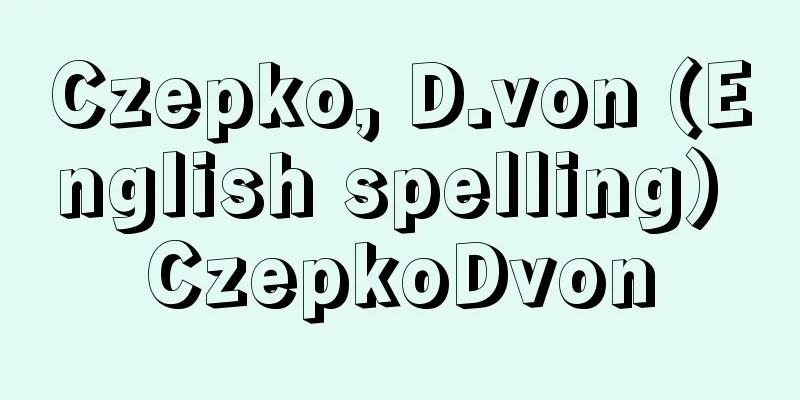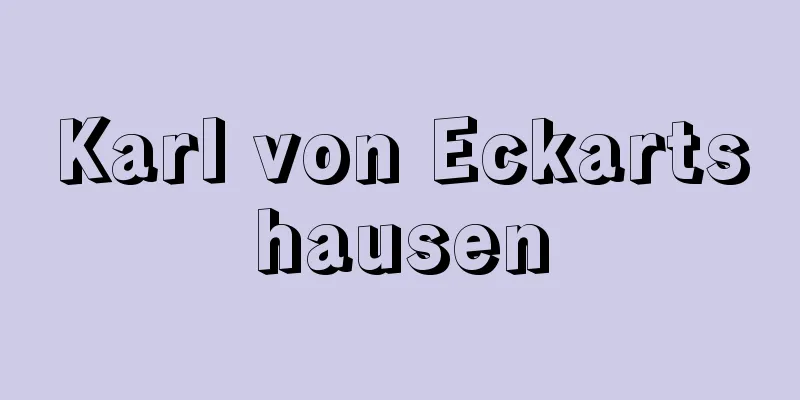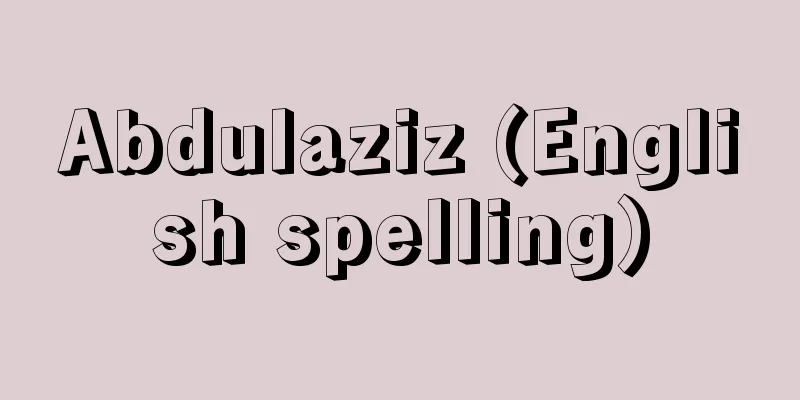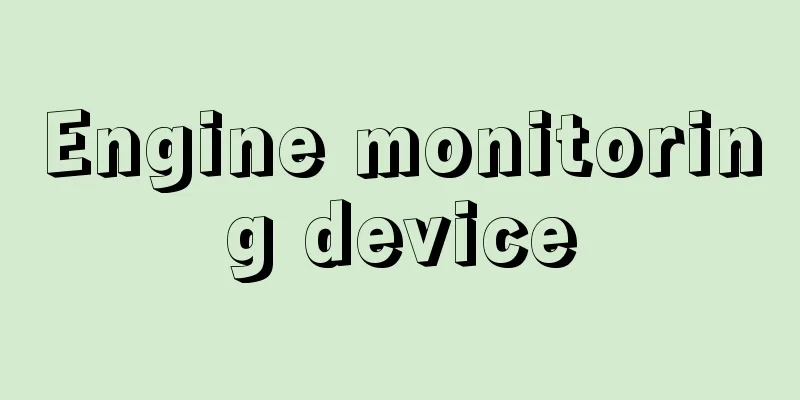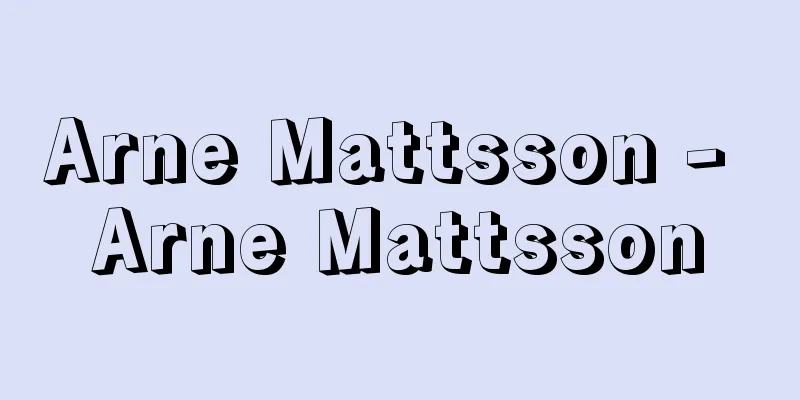Sign language - shuwa (English spelling) sign language
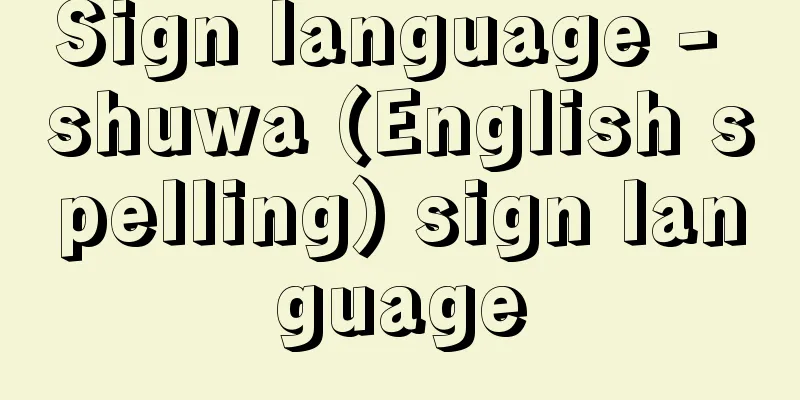
|
Sign language is a visual language expressed by the movement of the whole body, including hands, fingers, facial expressions, and mouth shape. Together with spoken language, which uses hearing and speech, it constitutes a natural human language. Hearing-impaired people who use sign language are generally called deaf people. Not all hearing-impaired people use sign language. Sign language was born, used, and passed down through generations in the deaf community. Japanese Sign Language is used in the deaf community in Japan. Each deaf community in each country (region) has its own sign language (for example, American Sign Language and British Sign Language). The 16th edition of Ethnologue (2009) lists 130 sign languages, but in reality there are probably more than that. International exchange among deaf people has also progressed, and International Sign is used at international conferences. However, this is not a unique language, but rather a pidgin language, or hybrid language, that was born from the contact of sign languages from various countries. [Linguistic situation of sign language] Deaf society is included in hearing society, so sign language is always in contact with spoken language. Deaf society is a minority society, and sign language can be said to be a minority language compared to the majority spoken language. Sign language has been influenced by spoken language in various ways, one of which is the manual alphabet. This is a system in which the shapes of the hands are used to represent letters used in spoken language. In Japan, as part of efforts in deaf education, Japanese finger alphabet was created based on American finger alphabet (Figure 1 on page 336). Finger alphabet originally belongs to the Japanese language, and is used in Japanese Sign Language to express proper names and to create new sign language words. Another characteristic of sign language is that the majority of sign language users learn it in a different environment than normal language acquisition. If both parents of a deaf child are deaf, the deaf child is born into a sign language environment and learns sign language as his or her first language at home, just as hearing children learn spoken language. However, there are only a few such deaf children. Approximately 90% of deaf children have both hearing parents, making it difficult for the deaf child to learn sign language as his or her first language from their parents. Outside the home, for example, when they start attending a school for the deaf, they learn sign language from older students who have already learned sign language or from classmates who come from deaf families, and this is later than the usual time of acquisition. It is notable that so-called native speakers (called native signers in sign language) are a minority among speakers of sign language. [History of Sign Language Research] Sign language has been subject to various prejudices, and there are still many erroneous ideas about it that are still in circulation. For example, 1) it is universal, 2) it is the same as gestures or pantomime, 3) it is merely a (and insufficient) representation of spoken language with hands, 4) it is a picture-like representation of objects and events and cannot express abstract concepts, 5) it is a list of words and has no rules like grammar, etc. Linguistic research on sign language began in the 1950s. W. C. Stokoe of Gallaudet University (the world's first comprehensive university for the deaf) began linguistic research on sign language used in the United States. At the time, sign language was recognized as an important means of communication for the deaf, but it was not considered a language. Stokoe first collected sign language words and analyzed the elements that make them up. As a result, he clarified that unlike gestures and pantomime, which completely express actions or the appearance of objects, words in sign language are composed of a combination of a small number of elements that are not directly related to meaning. In other words, he showed that sign language also has phoneme-level elements similar to spoken language (Stokoe gave this its own name, chereme, but the word phoneme is now used, as for spoken language). Based on this research, Stokoe published the world's first linguistic research paper on sign language, "Sign Language Structure," in 1960. Furthermore, he compiled a dictionary containing approximately 2,000 words in American Sign Language and published the world's first sign language dictionary (Stokoe, et al., 1965). This dictionary was an American Sign Language-English dictionary, and the entries were in American Sign Language (for which reason he developed a unique notational system for writing sign language), making it a groundbreaking research achievement. After that, research on sign languages in various countries began, and the research also expanded to grammar. In 1970, the academic journal of sign language linguistics, Sign Language Studies, began publication. It is now clear that sign language can be described and analyzed within the framework of linguistics, and that the complexity of its structure is comparable to that of spoken language. [Phonology of sign language] Storkey's research has revealed that sign language words are made up of smaller elements (phonemes). Words in Japanese Sign Language are made up of three elements: hand shape, hand position, and hand movement. For example, the word "think" (Figure 2①) is expressed by extending only the index finger and touching the tip of the finger to the head (although sign language words are written in Japanese, this does not necessarily mean the same thing in Japanese). Breaking this down into its phonological elements, it consists of the hand shape with the index finger extended, the position of the head, and the movement of contact. If even one of these elements is changed, it becomes a different word with a different meaning. For example, by changing the position to the cheek, it becomes "lie" (phonemes: index finger, cheek, touch, Figure 2②), by twisting and rotating the index finger, it becomes "think" (phonemes: index finger, head, twist, Figure 2③), and by adding the middle finger to the hand shape for "lie," it becomes "pine" (phonemes: index finger and middle finger, cheek, touch, Figure 2④). In this way, just like spoken languages, words in sign language are productively constructed from combinations of limited elements. However, sign languages also have their own unique characteristics. In spoken languages, phonemes are generally combined one by one sequentially along the time axis, but in sign languages, phonemes are combined simultaneously. [Sign language morphology] Sign language is thought to have a very rich mechanism for inflection. All three elements that make up a word can change, which creates new meanings. For example, the verb "pass" is created by moving the hand from the front to the front with the palm facing upwards (Figure 3①). The space in which sign language words are produced (the space in front of the speaker's chest within the range of both hands' movement) is called the sign language space, and various meanings are given to the places and positions within that space. For example, the speaker's position represents the first person ("I"), the other person's position represents the second person ("you"). The third person ("he" or "she") is given the meaning of the direction in which the person is actually located when present, and of any position within the sign language space when not present. The usual expression "pass" can mean "I pass it to you," but if the starting point and ending point of the hand movement are reversed, that is, from the forward position to the front, it means "you pass it to me" (Figure 3②). Additionally, any position to the side is assigned the meaning of "he," and moving the hand from a forward position to the side means "you give it to him" (Figure 3, ③). In this way, the position of the hand (the starting and ending points of the movement) indicates the subject and object of the verb, and verbs that display the subject and object of the verb in the inflection are called inflecting verbs. Other groups of verbs include spatial verbs and plain verbs. Spatial verbs are verbs that indicate movement in space (such as "go," "go home," and "move"). Any position in the sign language space is assigned the starting point and ending point of the movement, and the starting point and ending point of the hand movement correspond to these. For example, the expression "I am going from Tokyo to Nagoya" can be expressed in sign language as "I Tokyo i Nagoya j i iku j" ("Tokyo" and "Nagoya" are produced at arbitrary positions i and j in the sign language space, respectively, and then the start and end points of the movement of "iku" are produced so that they coincide with i and j). Invariant verbs are verbs that do not have a mechanism for inflection (such as "omou" (to think), "warau" (to laugh), and "owari" (to end). By changing the hand movement, the meaning of the verb can be expanded. For example, by repeating the movement of the hand in small steps, it means "keep passing" (Figure 3 ④), and by moving the hand forward and then to the side in an arc, it means "pass to everyone at the same time" (Figure 3 ⑤). To "pass to everyone one by one," move the hand to the side in small steps (Figure 3 ⑥). Hand shapes also change in various ways. The basic shape for "passing" is an open palm, but when passing a thin object (such as a book), the thumb and the tips of the other fingers are brought close together, and when passing a long, thin object (such as a stick), the hand changes to a clenched fist. When passing a cylindrical object such as a cup, the palm is slightly curved (C shape). The hand shape changes depending on the nature of the object being passed (thin, long, thin, etc.). This type of hand shape is called a classifier (CL). In Japanese, different counters such as "one sheet" and "one stick" are used depending on the shape of the object, but this is probably the same phenomenon. The important thing here is that the hand shape does not change continuously (analogously) depending on the object being handled, but is limited to an extremely small number of types of hand shapes. It is not a direct imitation of the way the object is being handled, as in pantomime or painting. [Syntax of sign language] Sign language is not only made up of hands and fingers. Facial expressions, body direction, and mouth shapes are also used, and these are collectively called non-manual elements (NMS). These play an important role in constructing sentences. For example, in Example 1, adding the action of raising eyebrows indicates that the sentence is a question, and in Example 2, adding the mouth shape "PA" to a verb indicates the completion of the action. The direction of the body when expressing sign language also plays an important role. For example, when expressing the speech or actions of a person whom a speaker is quoting, the speaker may mimic the facial expression of that person, or change the direction of the body or gaze to express the speech or actions. This is called a role shift or referential shift. Example 3 is a normal sentence, but Example 4 uses a role shift in the part about getting angry. It is distinguished from a normal sentence by the changes in facial expression, gaze, and direction of the body. "Getting angry" is an inflected verb, and in normal expressions it is expressed in the same position as "father" (subject) and "child" (object), but in a sentence using a role shift, the verb is changed to "I" (subject) and "you" (object) because the speaker is playing the role of "father." In this way, it is possible to clarify the subject of the action or speech, and to make the sign language expression more realistic. [History of the use of sign language] It is said that education and guidance for deaf children has been practiced since the time of ancient Greece. However, these were done by private tutors and individual instruction, and school education was started in 18th century France by Christian priest de l'Épée, CM. De L'Épée placed importance on the sign language that deaf children were already using, and educated them using a sign language that expressed French with hands (a French-language sign language) (called the manual method). In response to this, efforts were made to help deaf children acquire language through their remaining hearing, speech-reading, and pronunciation instruction (called the oral method). The so-called sign language vs. oral language debate continued, but in 1880, at a conference held in Milan, Italy, people involved in deaf education from around the world decided that the oral method was superior, and since then, the oral method has become dominant worldwide, and sign language has been suppressed. After World War II, the use of residual hearing increased with the advancement of hearing aid technology (known as the auditory-oral method), but the drawbacks of excessive language training from an early age and difficulties in communication between parents and children were also pointed out. As a result, the total communication method was developed in the late 1960s, mainly in the United States, which emphasizes communication with deaf children by using hearing and oral language as well as some sign language, and sign language was reevaluated. However, this method used not sign language as a natural language, but an artificial sign language created by educators to make it easier to use sign language and oral language at the same time. Since then, as linguistic research on sign language has progressed, social recognition of sign language as a language has progressed, and currently the bilingual method, which aims to acquire both sign language and spoken language, is becoming more widespread. The United Nations Convention on the Rights of Persons with Disabilities, enacted in 2006, also recognizes sign language as a language and states the need to use sign language in deaf education. However, there are many issues to be resolved, such as the training and education of teachers who can fully utilize sign language, the preparation of a sign language environment for deaf children (who make up the majority of deaf children) whose parents are both hearing, and how to teach spoken language based on sign language acquired as the first language. → Sign language learning → Hearing impairment [Takashi Torigoe] (The source of ① is the same as that of Figure 2.) Figure 3. The basic form and conjugation of "watasu" (New Japanese Sign Language Dictionary, edited by the Japan Sign Language Research Institute, National Sign Language Training Center, Social Welfare Corporation, All Japan Federation of the Deaf, 2011) Figure 2 Examples of words in Japanese Sign Language ("Sign Language Textbook for Elementary and Junior High School Students", Japan Federation of the Deaf, 1995) Figure 1 Finger spelling used in Japan Latest Sources Psychology Encyclopedia Latest Psychology Encyclopedia About Information |
|
手話とは,手や指,表情,口型など,身体全体の動きによって表現される視覚言語である。聴覚-音声を用いる音声言語とともに人間の自然言語を構成する。手話を使用している聴覚障害者を一般に聾者deaf peopleという。聴覚障害者がすべて手話を使用しているわけではない。聾者社会deaf communityで手話が生まれ,使用され,世代を越えて伝えられてきた。日本の聾者社会で使用されているのが日本手話Japanese Sign Languageである。各国(地域)の聾者社会には,それぞれ独自の手話言語(たとえば,アメリカ手話American Sign Languageやイギリス手話British Sign Languageなど)がある。『エスノローグEthnologue』第16版(2009)には,手話言語が130種類登録されているが,実際はそれ以上あるであろう。また聾者の国際交流が進み,国際会議などで用いられている国際手話International Signもある。ただこれは独自の言語というよりも,各国の手話の言語接触で生まれたピジン言語pidgin language,すなわち混成言語である。 【手話の言語的状況】 聾者社会は聴者の社会に包摂されているため,手話はつねに音声言語と接触している。聾者社会はマイノリティ社会であり,手話はマジョリティの音声言語に対してマイノリティ言語であるといえよう。手話は音声言語からさまざまな影響を受けているが,その一つとして,指文字manual alphabetがある。これは手の形で,音声言語で用いられている文字を表わすものである。日本でも聾教育の取り組みの中,アメリカの指文字を参考に日本の指文字が作られた(336ページ図1)。指文字は,本来は日本語に属するもので,日本手話では固有名を表現したり,新しい手話単語が作られたりするときに用いられている。 もう一つの手話言語の特徴は,手話話者の大半が通常の言語習得と異なる環境で学んでいることである。聾児の両親がともに聾者であれば,その聾児は手話言語環境に生まれたわけで,聴児が音声言語を学ぶのと同じように家庭の中で第1言語として手話を習得する。ただそのような聾児は少数である。聾児のおよそ90%は両親が聴者であり,その場合,聾児は両親から手話を第1言語として学ぶことが難しい。家庭外で,たとえば聾学校に通うようになって,手話をすでに習得している先輩や聾家庭出身の同級生から,しかも通常の習得時期よりも遅れて手話を学ぶことになる。手話言語の話者の中で,いわゆるネイティブ・スピーカー(手話ではネイティブ・サイナーといわれる)が少数派である点が特徴的である。 【手話研究の歴史】 手話は,これまでさまざまな偏見のもとにおかれ,手話に関しての誤った観念もまだなお流布している。たとえば,①万国に共通である,②ジェスチャーやパントマイムと同じである,③音声言語を手で(しかも不十分に)表わしたものにすぎない,④物や出来事を絵のように表わしたもので抽象的な概念を表わせない,⑤単語を羅列したもので文法のような規則がない,などである。 手話の言語学的な研究が行なわれ始めたのは,1950年代である。アメリカのギャローデット大学Gallaudet University(世界で初めて設立された聾者のための総合大学)のストーキーStokoe,W.C.は,アメリカで用いられている手話の言語学的な研究を開始した。当時,手話は聾者の大切なコミュニケーション手段であると認められていたが,言語であるとはみなされていなかった。ストーキーは,まず手話の単語を収集し,それを構成する要素の分析を行なった。その結果,手話の単語は,ジェスチャーやパントマイムのように動作や物の様子を丸ごと表わしているのと異なり,意味とは直接関係しない少数の要素の組み合わせで構成されていることを明らかにした。つまり手話にも,音声言語と同様の音素レベルの要素が存在することを示した(ストーキーはこれに動素cheremeという独自の名称を与えたが,現在は,音声言語と同様,音素phonemeということばが用いられている)。ストーキーは,この研究に基づき,1960年に世界で初めての手話の言語学的な研究論文「Sign Language Structure」を発表した。さらには,アメリカ手話をおよそ2000語収録した辞典を編纂,世界で初めての手話辞典を刊行した(Stokoe,et al.,1965)。この辞書は,アメリカ手話-英語辞典であり,見出し語がアメリカ手話である点(そのために手話を記述するための独自の表記法を開発した),画期的な研究業績といえよう。 その後,各国の手話言語の研究も始まり,また文法の研究にも広がっていった。1970年には,手話言語学の学術誌である『Sign Language Studies』の刊行が始まっている。現在では,手話は言語学の枠組みで記述・分析が可能であること,しかもその構造の複雑さは音声言語と比べて遜色のないものであることが明らかになっている。 【手話の音韻論】 ストーキーの研究により,手話単語は,それよりも小さな要素(音素)から成り立っていることが明らかになった。日本手話の単語は,手の形(手型),手の位置,手の運動の三つの要素で構成される。たとえば,「思う」という単語(図2①)は,人差し指だけを伸ばし,その指先を頭に接触させて表わす(手話の単語を日本語で表記するが,日本語の意味と必ずしも一致しているわけではない)。これを音韻的な要素に分解すると,人差し指を伸ばした手の形,頭の位置,そして接触という運動からなる。そのうちの一つでも要素が変わると,別の意味を担う異なった語となる。たとえば,位置が頰に変わると「うそ」(音素:人差し指,頰,接触,図2②),人差し指をねじるように回転させると「考える」(音素:人差し指,頭,ねじる,図2③),「うそ」の手型に中指が付け加わると「松」(音素:人差し指と中指,頰,接触,図2④)となる。このように,手話の単語は,音声言語と同じように,限られた要素の組み合わせにより生産的に構成されているのである。ただ手話言語独自の特徴もある。音声言語では一般に音素は時間軸に沿って一つずつ継起的に結合されるが,手話言語では音素が同時的に結合されるのである。 【手話の形態論】 手話は非常に豊かな語形変化のしくみをもつと考えられている。語を構成する前記の三つの要素はいずれも変化することができ,それにより新たな意味が生み出される。たとえば「渡す」という動詞は,手のひらを上方に向け,手前から前方に動かすことにより作られる(図3①)。手話単語が産出される空間(話者の胸の前で,両手が動く範囲の空間)を手話空間signing spaceというが,その空間内の場所や位置にさまざまな意味が付与される。たとえば,話者側の位置が1人称(「わたし」),相手側の位置が2人称(「あなた」)を表わし,3人称(「彼」「彼女」)は,現前する場合にはその人が実際にいる方向に,現前しない場合は手話空間内の任意の位置に意味が与えられる。通常の「渡す」の表現は「わたしがあなたに渡す」の意味にもなるが,手の運動の起点と終点を逆に,すなわち前方の位置から手前へと変化させると「あなたがわたしに渡す」という意味になる(図3②)。また,側方の任意の位置に「彼」という意味が与えられ,前方の位置から側方に手を動かすと「あなたが彼に渡す」という意味になる(図3③)。このように手の位置(運動の起点と終点)が,動詞の主語と目的語を示しており,動詞の主語と目的語を語形変化の中に表示する動詞を屈折動詞inflecting verbという。このほかの動詞のグループとして空間動詞spatial verbと無変化動詞plain verbがある。空間動詞は,空間の移動を意味する動詞(「行く」,「帰る」,「引越しする」など)である。手話空間内の任意の位置に移動の出発点と終着点が割り当てられ,手の運動の起点と終点がそれらに一致する。たとえば,「わたしは東京から名古屋に行く」の表現は,手話文で表わすと「わたし 東京i 名古屋j i行くj」となる(「東京」と「名古屋」がそれぞれ手話空間の任意の位置iとjで産出され,次に「行く」の運動の起点と終点がiとjに一致して産出される)。なお無変化動詞は,語形変化のしくみをもたない動詞である(「思う」,「笑う」,「終わる」など)。 手の運動を変化させることにより,動詞の意味を拡張させることができる。たとえば,「渡す」の動きを小刻みに繰り返すことによって,「渡しつづける」という意味になり(図3④),前方へ,さらに側方に弧を描くように手を移動させると,「みんなにいっせいに渡す」という意味になる(図3⑤)。「みんなに一人ずつ渡す」場合には,動きを小刻みに繰り返しながら側方に動かす(図3⑥)。 手型もさまざまに変化する。「渡す」の基本型は手のひらを広げた形であるが,薄い物(たとえば本)を渡す場合には,親指と他指の先端を接近させる形に変わり,また細長い物(たとえば棒)を渡す場合には,手を握った形(グーの形)に変化する。コップのような円筒状の物を渡す場合には,手のひらをやや湾曲させる形(Cの形)を作る。渡される物の性質(薄っぺらいもの,細長いものなど)によって手型が変化するのである。このような手型を類辞(分類辞,類別詞ともいう)classifier(CL)という。日本語でも1枚や1本など,助数詞が物の形状に応じて異なったものが用いられるが,同じ現象であろう。ここで重要なことは,手の形が扱う物によって連続的(アナログ的)に変化するのではなく,きわめて少数の種類の手型に限られているということである。パントマイムや絵のように,物を扱う様子をそのまま模写しているのではないのである。 【手話の統語論】 手話は手や指のみで構成されているのではない。表情や身体の向き,口型も使用され,これらをまとめて非手指要素non-manual signal(NMS)という。これらは文を構成するうえで重要な役割を担っている。たとえば,〈文例1〉のように,眉を上げる動作が付加されることにより,その文が疑問文であることを示したり,〈文例2〉のように,「PA」という口型を動詞に付けることにより,動作の完了を表わしたりする。 手話を表現するときの身体の向きも重要な役割を担う。たとえば,話者が引用する人の発話や動作を表現するときに,その者の表情をまねたり,身体の向きや視線を変えたりして表現する。これをロールシフトrole shift,あるいはレファレンシャルシフトreferential shiftという。〈文例3〉は通常の文の表現であるが,〈文例4〉は「怒る」部分にロールシフトが用いられている。表情や視線,身体の向きの変化により,通常の文と区別される。「怒る」は屈折動詞であり,通常の表現では,「父」(主語)と「子ども」(目的語)の位置に一致して表現されるが,ロールシフトを用いた文では,「父」の役割を担っているため「わたし」(主語)と「あなた」(目的語)に一致した語形変化になっている。このようにして動作や発言を行なっている動作主をより明確にするとともに,手話の表現をより臨場感あるものにすることができる。 【手話の活用の歴史】 聾児に対する教育や指導は,古代ギリシアの時代から行なわれていたという。ただこれらは家庭教師や個人指導によるもので,学校教育としては,18世紀のフランスでキリスト教神父のド・レペde l'Épée,C.M.によって始められた。ド・レペは,聾児たちがすでに使っていた手話を重視し,それにフランス語を手で表わした手話(フランス語対応手話)を用いて教育を行なった(手話法manual methodという)。これに対して,聾児の残存聴力や読話,発音指導を通して言語を獲得させようとする取り組み(口話法oral methodという)も生まれた。いわゆる手話-口話論争が続いたが,1880年に世界の聾教育関係者がイタリア・ミラノに集まった会議で,口話法が優れていると決議され,以降,世界的に口話法が優勢となり,手話が抑圧されていくことになる。第2次世界大戦後は,補聴器技術の進歩とともに残存聴力の活用も進む(聴覚-口話法auditory-oral methodという)が,他方で早期からの過度な言語訓練や親子間のコミュニケーションの困難さの弊害も指摘された。その結果,1960年代後半からアメリカを中心に,聴覚や口話も使いつつ手話の一部を利用し,聾児とのコミュニケーションを重視するトータルコミュニケーション法total communication methodが生まれ,手話の再評価が進められた。ただこの方法では,自然言語としての手話でなく,手話と口話の併用に便利なように,教育者が人工的に作った手話が用いられた。その後,手話の言語学的研究の深まりとともに,手話の言語としての社会的認知が進められ,現在は,手話言語と音声言語の二つの言語の獲得をめざすバイリンガル教育法bilingual methodが広がりつつある。2006年に制定された国連障害者権利条約Convention on the Rights of Persons with Disabilitiesでも,手話が言語として認知され,聾教育での手話の活用の必要性が記されている。しかし,手話が十分に活用できる教員の養成・研修,両親がともに聴者である聾児(聾児の大半を占める)の手話言語環境の整備,第1言語として獲得した手話を基にどのように音声言語を指導するかなど,解決すべき課題は多い。 →手話学習 →聴覚障害 〔鳥越 隆士〕 (出典は①のみ図2と同じ)"> 図3 「渡す」の基本形と語形変化 (社会福祉法人全国手話研修セ ンター日本手話研究所編 『新日本語−手話辞典』一 般財団法人全日本ろうあ 連盟,2011)"> 図2 日本手話の単語の例 (『小学生・中学生のための手話テキスト』一般財団法人 全日本ろうあ連盟,1995)"> 図1 日本で用いられている指文字 出典 最新 心理学事典最新 心理学事典について 情報 |
Recommend
Bandage - Bandage
A type of plaster, the Japanese Pharmacopoeia def...
Newly Selected Records of Family Names - Shinsen Shojiroku
This is a genealogy book of ancient clans compile...
Light theft - karukinusumi
…The equivalent of robbery was oihagi (pursuit), ...
Analytic continuation
An operation that expands the domain of a function...
News from the Wild Geese - News from the Wild Geese
Kabuki kyogen. One act. The play title is "Wa...
Oonie Festival
…It is also called the Oonie Festival, the Senso ...
Takeyoshi Kawashima
Civil law and legal sociology scholar. Born in Gi...
Abadai Khan - Abadai Khan
... As mentioned above, Hohhot was the first plac...
Ushibuka [city] - Ushibuka
An old city occupying the southern tip of Amakusa ...
Porion
…When the human head and face are viewed from the...
Wu-li (five-year ceremony)
A general term for Chinese rituals. In ancient Chi...
Amide - Amido (English spelling)
Generally, when the term "amide" is use...
Kao
A painter of ink and ink from the Northern and Sou...
Instrument flight rules (IFR)
A type of flight procedure for aircraft, in which ...
set stereo system
...It is the reciprocal of compliance. Set stereo...
